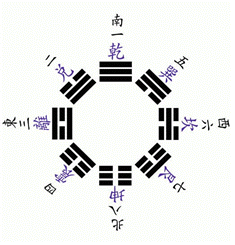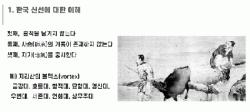학술대회논문
Magoist Culture in Siberia
Dr. Akhanyanov Chingis
2022년 증산도 후천선문화 국제학술대회 발표논문
MAGOIST CULTURE IN SIBERIA
Dr. Akhanyanov Chingis
(Researcher Fellow, Buryat State University, Ulan-Ude, Russia)
Summary
Goddess Mago had a huge impact on Siberian culture and beliefs there. The study of the culture and foundations of the Goddess Mago is of great scientific and cultural importance. Especially for the peoples of Asia and the regions around Baikal, Altai and Yakutia, this can serve as a compass in returning home to the true faith.
This article is devoted to manifestations of the cult of the Goddess Mago in Siberia and cultural parallels.
The article presents several aspects of the manifestation of her deeds and cult in Siberia. The region of origin of the cult of Goddess Mago is considered to be modern day Yakutia, in particular, the Vilyuisky District near the huge Vilyuisky reservoir.
The article also provides an analysis of the cults of veneration of Mother Goddess that the Siberian peoples have. These cults are strikingly similar to the description of worship and rituals dedicated to the Goddess Mago. The cults of Altaians, Buryats, Yakuts are considered.
Keywords
Goddess Mago, Siberian peoples, cult of Mother Goddess, cultural parallels, true faith of ancestors.
In light of recent events, the study of the culture and foundations of the Goddess Mago has great scientific and cultural importance. Especially for the peoples of Asia and the regions around Baikal, Altai and Yakutia.
I would like to devote my report to the manifestations of the cult of the Goddess Mago in Siberia.
Several aspects of the manifestation of her deeds and cult in Siberia will be presented. The first topic is about the region of origin. It is modern day Yakutia, the Vilyuisky District. near the huge Vilyuisky reservoir. We can see archaeological remains as well related to the cult of Mago.
Secondly, the area itself, according to An Ge Jon, is the area where the Sacred buildings of the Goddess Mago were located. Until now, these places are almost inaccessible and full of mysteries.
Thirdly, the cults of venerating the Mother Goddess are prevalent among the Siberian peoples. Their cults are strikingly similar to the description of worship and rituals dedicated to the Goddess Mago. We will consider those cases of 1) the Altaians, 2) the Buryats, and 3) the Russians living in Siberia and draw a conclusion.
It is a hypothesis that the first land and castle of the Goddess Mago were located in Yakutia. The Republic of Sakha (Yakutia) is a constituent entity of the Russian Federation. This republic is the largest in terms of territorial size not only in Russia, but also in the world, in terms of administrative-territorial unit. The size of Yakutia exceeds that of Argentina, the eighth biggest country in the world. However, the population of the republic is smaller than one million. The total size of its territory is 3103.2 thousand square kilometers. It is also one of the harshest areas in the world in terms of climate: the cold North Pole is located here.
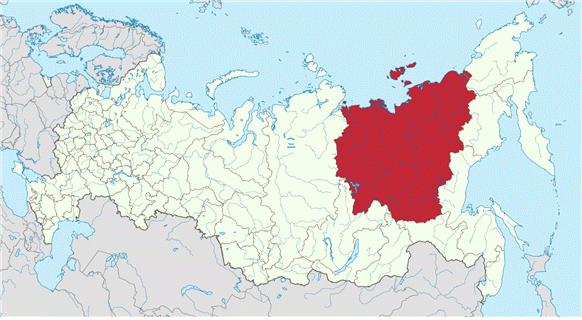
Figure 1. Republic of Sakha (Yakutia) on the map of Russia
Climate
The climate is sharply continental, characterized by long winters and short summers. The summer months continue from April through to October in Yakutia. The temperature difference between the coldest month (January) and the warmest month (July) is 70 to75 degrees. The lowest temperature in the eastern mountain ranges, encompassing basins and other depressions goes down to -70 ° C). This is the coldest place in the world.
The Yakuts are a Turkic-speaking indigenous population of the Republic of Sakha (Yakutia) within the Russian Federation. The existing historical tradition connects the origin of the Yakut culture with the Kurykan heritage in the south. This culture developed in close contact with the culture of Yenisei Kyrgyz people, based on a local cultural complex showing cattle breeding tradition. First of all, the main occupations and leading elements of the material culture of the Kyrgyz and Yakuts were formed within the same borders. The settlements and dwellings, food, household utensils, clothing, vehicles show similarities. The same economic and cultural type also appears to have influenced each other and produced the commonality in the spiritual culture of the two peoples, as can be observed in the folklore, rituals, religious beliefs and cult. Among the religious beliefs and rituals, there are also cults: Tenir, mother Umai and Earth - water. It has been suggested that the Castle of the Goddess Mago is located in the mysterious Far North, in the severely frosty Vilyui region of Yakutia.
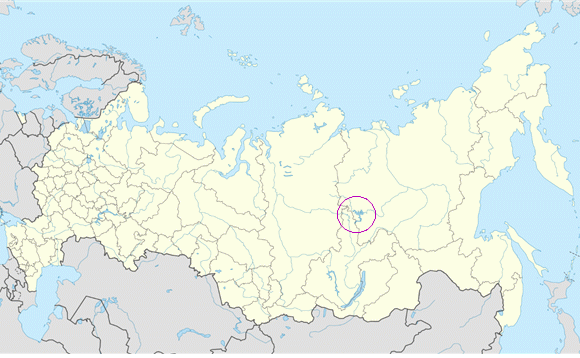
Figure 2. Map indicating the alleged location of Mago Castle.
The Vilyui reservoir is a reservoir formed by the result of the construction of Vilyui hydroelectric power station along the Vilyui River, a tributary of the Lena River. Located in Yakutia near the republican border with the Irkutsk region, approximately 80 km east of the Nizhnyaya Tunguska River, the right-hand tributary of the Yenisei. The surface area is 2360 km². The catchment area is 141,150 km². The reservoir was formed in 1965-67 dam of the Vilyui hydroelectric power station on the Vilyui River. During the construction of the reservoir, 2.3 thousand hectares of agricultural land were flooded and 50 buildings were moved.
THE MYSTERY OF THE VILYUY BOILERS IN THE DEATH VALLEY
There is an anomalous zone located in the valley of the Vilyui River. The Yakuts call it “Elyuyu Cherkechekh”, meaning “Death Valley”. There are large metal hemispheric objects with a diameter of 8-10 meters. The natives call them cauldrons and forbid approaching them because, more than once, those hunters who spent the night inside them in the icy winter season became very sick and died afterwards.
Who left those outlandish hemispheric objects in this wilderness: ancient civilization or aliens? Why do they have a detrimental effect on people and animals? Science has not yet found answers to these questions.
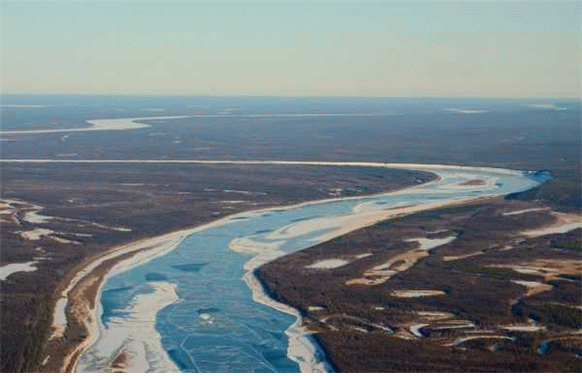
Figure 3. View of the Vilyui River.
The first information about Death Valley was reported to the scientific world by naturalist, teacher and researcher Richard Karlovich Maak. He was in Yakutia from 1853 to 1855, conducted scientific research in the basins of the Vilyui, Olekma and Chona rivers, studied the terrain, geology, and also got acquainted with the peoples inhabiting this region.
In his notes dated 1853, Maak mentioned that on the banks of the river Algy Timirbit, which means “the big cauldron drowned”, there really is a giant copper cauldron.
Its magnitude is unknown, since only the edge is visible above the ground, and several trees grow in it. This find did not arouse much interest in the world of science: no one was going to equip an expedition to a hard-to-reach taiga region simply because of some kind of boiler.
Exactly the same object was discovered in the middle of the 20th century during the construction of the Vilyui hydroelectric dam. When the hydro-builders laid a diversion channel and drained the Vilyuy channel, a convex metal “bald spot” was discovered.
The summoned authorities, having hastily examined the find, came to the conclusion that this was a nonsense, not worthy of attention, and ordered the work to continue. This is understandable because even though the management was asked for a plan, no one wanted to disrupt the work schedule for a trifle. Obviously, the “cauldron” now rests under a layer of silt on the river bottom.
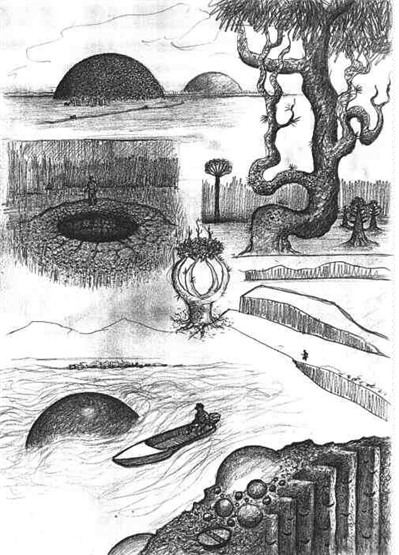
Figure 4. about the Vilyui zone according to the recollections of witnesses.
Only in the 1970s, Yakut ufologists collected and documented the evidence of local residents. For example, they claim that once every 100 years, pillars and balls of fire burst out of the opening hemispheres, directed by the demon Wat Usumu Tong Duurai.
Further, in the Death Valley there is a flattened reddish iron arch into which you can even drive a deer, and behind it, there is a spiral passage leading to many metal rooms.
It is much warmer there than outside, but careless travelers who decided to spend the night in these rooms inevitably fell ill, and many of them died.
Particularly interesting are the testimonies of an old Evenk hunter that in the area between the rivers Nyurgun Bootur (meaning “Glorious Hero”) and Ataradak (meaning “very large triangular iron prison”), there is a metal hole in which lie frozen very thin, black one-eyed people in iron robes.
Comparing the testimonies of the inhabitants with legends and myths, including the Yakut epic Olonkho, the researchers reconstructed the history of the Death Valley. In ancient times, this area was inhabited by a few Tungus nomads. One day, an impenetrable darkness enveloped the valley, and a deafening roar shook the surroundings.
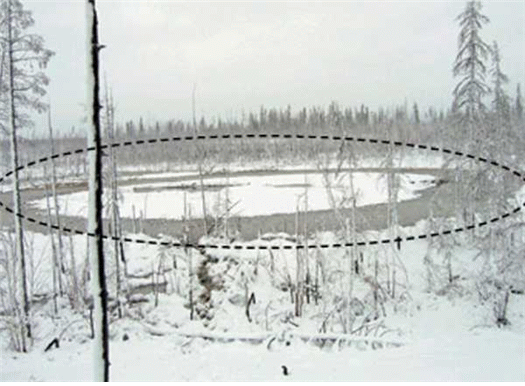
Figure 5. Smooth circles everywhere in the Vilyui valley.
A hurricane of unprecedented strength arose, powerful blows shook the earth. Lightning split the sky in all directions. When everything calmed down and the darkness cleared, a tall vertical structure shone in the sun in the middle of the scorched earth, visible from a distance of many days of travel. For a long time, it emitted unpleasant, ear-piercing sounds and gradually decreased in height until it completely disappeared (perhaps under the ground). Whoever, out of curiosity, tried to penetrate this territory, did not return home.
Over time, the soil, fertilized with ash, restored the vegetation cover. Solid young grasses attracted the beast, and nomadic hunters also reached out for the animals. They saw a high domed “iron house” resting on numerous side supports. But it was not possible to enter it - it was tall and smooth, had neither windows nor doors.
Over time, the “house” finally plunged into permafrost, and only the entrance arch remained on the surface. But one day there was a small earthquake, and a thin fiery tornado pierced the sky. A dazzling fireball appeared at its top. This ball, accompanied by “four thunders in a row”, leaving behind a fiery trail, rushed to the ground along a gentle trajectory and, hiding behind the horizon, exploded. The nomads were worried, but did not abandon their habitable places, since this “demon”, without harming them, exploded over the neighboring warlike tribe.
A few decades later, history repeated itself - the fireball flew in the same direction and again destroyed only its neighbors. Having seen this, they believed that this “demon” was their protector, they made a legend about him, giving the nickname of “Nyurgun Bootur”.
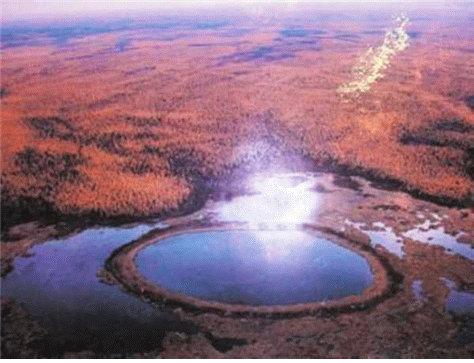
Figure 6. Mysterious circle in a swamp near the Vilyuy River
But one day, with a deafening roar, a giant fireball burst out of the vent and immediately exploded. There was a strong earthquake. Some hills cut cracks more than 100 meters deep.
After the explosion, for a long time, the “fire sea” splashed, over which a disk-shaped “rotating island” soared. The consequences of the explosion spread over a radius of more than a thousand kilometers.
The nomadic tribes that survived along the outskirts fled in different directions, away from the disastrous place, but this did not save them from death. They all died out from some strange, hereditary disease.
SOUVENIR FROM THE BOILER
A letter from a certain M.P. Koretsky from Vladivostok is preserved in the archives of the National Library of the Republic of Yakutia. Here is a snippet from it:
... I saw seven such “cauldrons”. All of them seem to me completely mysterious: firstly, the size is from six to nine meters in diameter. Secondly, they are made of an incomprehensible metal.
The fact is that even a sharpened chisel does not take “boilers” even though they tried it more than once. Metal does not break off and is not forged. Even on steel, a hammer would certainly leave noticeable dents. Further, this metal is covered on top of another layer of an unknown material, similar to emery ...
I noted that the vegetation around the “cauldrons” is anomalous - not at all like what grows around. It is more lush: large-leaved burdocks, very long vines, strange grass - one and a half to two times taller than human growth. In one of the “cauldrons” we spent the night with the whole group (6 people). No one was seriously ill afterwards.
Unless one of my friends completely lost all his hair after three months. And, on the left side of my head (I slept on it) there were three small sores the size of a match head each. I treated them all my life, but they have not gone away until today.
All our attempts to break off at least a piece from the strange “cauldrons” were unsuccessful. The only thing I managed to carry away was a stone. But not simple: half a perfect ball with a diameter of six centimeters. It was black in color, had no visible traces of processing, but was very smooth, as if polished. I picked it up from the ground inside one of those cauldrons.
I brought this souvenir with me to the village of Samarka in the Chuguevsky District of Primorsky Krai, where my parents lived in 1933. He lay idle until his grandmother decided to rebuild the house. It was necessary to insert glass into the windows, and there was no glass cutter in the whole village. I tried to scratch the halves of this stone ball with an edge, it turned out that it cuts with amazing beauty and ease.
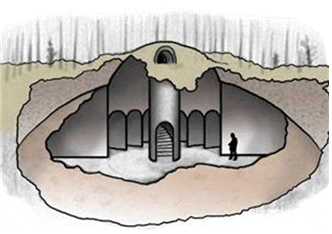
Figure 7. Buildings in the remote taiga according to eyewitnesses.
At the end of the 20th and at the beginning of the 21st century, several expeditions visited Death Valley. They recorded several perfectly round reservoirs, but the instruments available to the researchers did not give unequivocal confirmation of the existence of metal structures in the ground.
A more thorough study of the area with more advanced equipment is needed. Currently, there are several versions of the origin of the mysterious “cauldrons”. Skeptics believe that they are of a completely terrestrial origin and are fragments of space rockets that crashed during launch, or detachable stages.
The used parts of the rockets are indeed dropped over this territory. However, the “boilers” arose many centuries before the launch of spacecraft by the current mankind.
Ufologists suggest that an alien base is located in Death Valley, which automatically explores the Earth and protects it from cataclysms.
However, perhaps, the strange structures are escape pods for crashed alien ships. There is an opinion that “cauldrons” are the remains of the apparatus of an ancient earthly civilization that died as a result of a nuclear war on a planetary scale. There are also versions that these are unknown natural geological formations or an abandoned nuclear laboratory of the USSR.
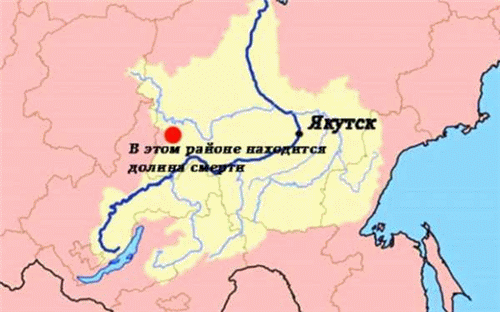
Figure 8. Death Valley is located in this area
In the mid-50s. of the last century, when the Cold War was rapidly gaining momentum, the Western media reported that a “superbomb” - a thermonuclear charge with a capacity of 30 megatons - had been tested at a Soviet nuclear test site, located in northwestern Yakutia.
However, the maximum yield of strategic munitions that the Soviet Union actually possessed at that time was much less. For example, the RDS-37 thermonuclear bomb tested on November 22, 1955 had a power of “only” 1.6 Mt. Representatives of the high Soviet nomenklatura, reading such “speculations” in the bourgeois press, only grinned - “They say, they know ours” and “Fear has big eyes.” And only a few initiates knew the truth: a powerful explosion was indeed recorded in Yakutia. In addition to the fact that the explosion was “detected” by seismic stations, there were many eyewitness accounts who heard a terrible roar and saw a huge pillar of fire rushing into the sky.
In addition, with a more thorough study of the incident, it turned out that similar explosions were observed in Yakutia earlier, in the 30s of the 20th century. And if the explosion in 1955 could still somehow be explained by “far-fetched” interpretations, such as nuclear weapon tests, no one dared to talk about this during the thirties.
So, what exploded then in Yakutia, if the most powerful human weapon at that time was not capable of this? To answer this question, let’s think about another phenomenon that comes from the same places. Yakut boilers. One of the most mysterious phenomena that people have encountered. Mysterious artifacts, about the origin of which there are endless disputes. What are they? They are large, dome-shaped formations with several meters in length that have grown into the ground. They are exceptionally regular and hemispherical in shape. The material of which the domes are made resembles copper. This is the reason why the Yakuts call these artifacts “Large inverted copper cauldrons”). But, this is clearly not metal.
All attempts ever made to “pick out a piece” from such a boiler were unsuccessful. The surface of the domes is extremely smooth, as if polished. It is also very interesting that some domes have openings in the form of an arch, like an entrance or an exit.
Moreover, the Yakuts, who penetrated through the arched passages into the domes, said that the domes were separated by metal walls inside, forming some kind of rooms ... or cabins or compartments. However, the most incredible stories are the stories of some hunters who claimed that they found “dead one-eyed people in iron clothes” in these metal rooms.
By the way, among the Yakuts, the area in which the domes are located is called “Elyuyu Cherkechekh”, which means “Valley of Death”. Local hunters say that if someone spends a night in those domes, then that person become “very sick” afterwards, and that if you spend the night there several times, you may die altogether. To finally clarify the picture, it is worth mentioning that, according to the reports of the same trappers, the vegetation in the Death Valley is “somewhat different” from those in other areas.
There are so many unexplored corners in the world. They keep secrets that scientists and researchers from all over the world have been trying to unravel for many years. They are shrouded in stories and legends. One of the most famous such stories is the story of the Yakut cauldrons.
They talk a lot about them, but at the same time, they know nothing. Researchers who visited the “valley of death” at different times either died too quickly or flatly refused to discuss their findings. There are neither people to guide nor roads leading to this area. The only way to get there is on foot or by helicopter.
The legend about the Yakut boilers attracted researchers since a long time. People from all over the world came here in an attempt to see firsthand what the ancient legends testify to. Once, three young people became interested in this legend - students from the city of Yakutsk.
The expedition to the boilers began in small teams, exploring the banks of the Vilyui. There, the researchers interested in folklore, “collected” stories from local residents. None of the locals could name the exact location of the boilers, but, with pleasure, they shared various stories with the students who acquired more and more new details.
So, having heard stories about the iron dungeon, which is always warm, regardless of the season, a smooth arch made of an unknown metal, protruding from the permafrost, and the stories about the inhabitants of the caves - black one-eyed people dressed in iron clothes, etc., the students’ desire to find the “Valley of Death” by all means, was only strengthened despite of all difficulties. People attempted dissuade the brave young people, arguing that many such reckless “seekers” perished in the bowels of the iron cave, but no words could affect the group of enthusiasts. Soon, the students continued on their way and, for a month, no one knew or heard anything about them. And, when they returned to Yakutsk, they told an absolutely incredible story. Many people even thought that all the three had lost their minds.
The guys said that, after all, they managed to find the “Valley of Death”. It extends along the right tributary of a shallow river. On the very first day spent in the magical valley, all three felt unwell: First of all, I was worried about dizziness, chills and weakness. My legs became like cotton wool, I had no strength to move on. Assuming that fatigue was affecting us, we set up a camp and decided to go to the river in order to catch water. And there, quite unexpectedly, an amazing object caught my eye.
There were several gigantic structures, about 10 meters in diameter, reminiscent of the described Yakut cauldrons. It is difficult to say what they experienced at that moment, fear or joy, but they decided to come closer in order to carefully examine the unusual structure. It turned out to be metal, but it was not possible to establish what kind of metal it was. Attempts to break off a piece from the boiler also failed. Neither an axe, nor a sharp screwdriver, nor a hammer left even a scratch on the silvery surface of the boiler. Later, repeated attempts were made to obtain at least a small piece of the boiler material suitable for further research, but the extremely solid metal did not succumb.
The students noticed the abundance of vegetation around the boilers. Including giant burdocks, not typical for the area. Also, unusual grass grew here, many times higher than human height. The darkness, which caught the researchers by surprise, and the cold, damp weather forced the students to change their place of deployment. The tents were set up close to the cauldron, from which unusual heat emanated.
But the attempt to find the premises, which were told by the local “old-timers”, failed. Due to increasingly deteriorating health, the students left the search and returned to their city.
However, interest in this phenomenon did not fade away. Students became more and more carried away and looked for new information about the legends, at least some documentation related to the anomalous zone, directly or indirectly. Once they found an interesting letter that a Russian researcher Koretsky wrote to his friend. The letter said that he had been in these areas at a very young age and still cannot forget this place.
The students could not forget this letter. We were about to hit the road again. But, when they started having some health problems, they got scared, linking the ailments with the boilers.
No one can answer whether there was actually a relationship between the visit and the ailments. Some other people who were close to the boilers, but, at a distance from them, also experienced health problems, but they immediately recovered and did not feel any discomfort. Therefore, it is difficult to say for sure. Perhaps the time spent near the boilers and the physical form of each individual person also plays a role in the severity of the ailments.
What other versions of legends exist about this area? In fact, there are many. Some eyewitnesses told how one night they saw a UFO in these areass. The ship sank, and some kind of vertical structure screwed into the ground. They say that this is how the underground city was once built. Outside, only the entrances, the so-called descents to the underground city, were visible. Old-timers of nearby villages say that in ancient times, shamans closed all entrances to immure the evil force. But, unfortunately, they did it badly. In the future, from time to time, thin iron people were seen in the boilers.
Numerous fishermen who once visited these places were frightened by unusual luminous balls. More and less large spheres pursued the fishermen and frightened them, as if chasing them away from their lands. The fishermen fled in horror, but then they repeatedly recalled these bundles of energy, either holograms or ghosts protecting the boilers.
It is even believed that there is a direct relationship between the boilers and the legendary Tunguska meteorite. Why didn’t it hit the ground and disappeared? Maybe people still live on earth only thanks to the boilers, which, as a protective structure of extraterrestrial civilizations, protect the earth. Then the boilers are means of anti-space defense. It was their energy that rushed to meet the crushing meteorite and left no trace of it.
It is still not clear whether these structures belong to former civilizations or to aliens, but, nevertheless, they lean more to the direction of alien theories. It is also believed that aliens are involved in the pyramids of an unusual shape, which are located right there. Some of the buildings exploded, some went under water. The boilers went under the water. Every decade it becomes more and more difficult to find them. A very important issue for many decades in the history of mankind is the two theories of creationism (saying that man was created by some higher intelligence) and human evolutionary development.
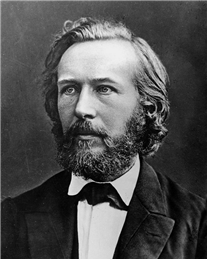
Figure 9. Ernst Heinrich Philipp August Haeckel (1834-1919) was a German naturalist and philosopher. The author of the terms “Pithecanthropus”, “phylogeny” and “ontogeny” is also often credited with the authorship of the term “ecology”.
E. Haeckel, one of the greatest Darwinists of his time, back in 1876 put forward a hypothesis about the location of the ancestral home of mankind in South Asia. At the same time, he believed that humans are morphologically closest to gibbons, and not to gorillas or chimpanzees. According to him, on the site of the Indian Ocean there was once a mainland that stretched from Indonesia along South Asia to the eastern coast of Africa. “This large continent that once existed there,” he wrote, “which the Englishman Skleter called Lemuria, due to the characteristic semi-monkeys that lived on it, was perhaps the cradle of the human race which was formed there from anthropoid monkeys.”
Moritz Wagner in the 19th century proposed the theory that the first human life did not originate in Africa, but in colder places, for example, in North Asia.
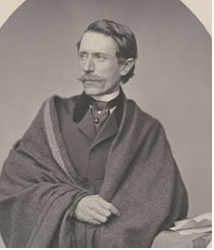
Figure 10. The German traveler Moritz Wagner (1813-1887)
Already in 1982, the Russian archaeologist Mochanov from Yakutia found the Deering-Yuryakh site with the datings of human activity more than 50 thousand years ago. Thus, he confirms the idea that the Goddess Mago could have lived in the territory of modern Yakutia.
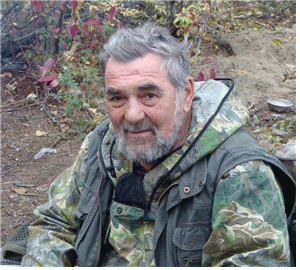
Figure 11. Russian archaeologist, Doctor of Sciences, Yuri Mochanov
For the first time, the hypothesis of the origin of mankind in the cold climate of the high latitudes of Eurasia was put forward in the 1870s by the German traveler and naturalist Moritz Wagner, a contemporary of Charles Darwin. He believed that it was precisely the harsh, unfavorable condition that could “force” some of the most intelligent and active monkeys not to die, but to “humanize”.
For a long time, the hypothesis remained in oblivion, primarily due to the lack of any material evidence. Recently, however, it has been reanimated by the discovery in the territory of Yakutia of sites from the time of the most ancient Paleolithic - the Dereeng - culture. According to initial estimates, the age of this culture was 1.8-3.2 million years, which is quite competitive with the age of the finds in the Olduvai Gorge in East Africa.
In 1997, Michael Waters, Stephen Foreman and James Pearson, using thermoluminescent analysis, estimated the age of the Deering culture and, according to them, it ranged from 260 to 370 thousand years. However, the data obtained went beyond the reference values, which reflects the impossibility of this method to estimate the true age of the material under study.
After 24 years, in 2021, field studies of the geological section in the area of the Deering-Yuryakh site were resumed. To determine the age, a modern complex of dating method was used, including cosmogenic dating. The method of cosmogenic dating makes it possible to calculate the age in a much wider range up to 5-6 million years. The cosmogenic study is being carried out by Prof. Mads Knudsen of Aarhus University.
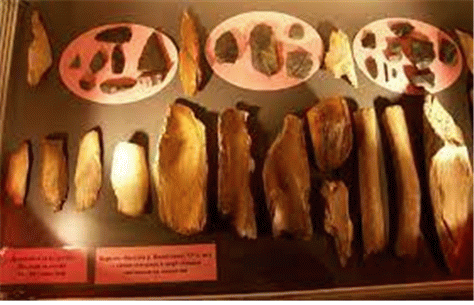
Figure 12. Human tools made of stone and bone found in the ancient land of Yakutia.
Considering the pantheon of deities of another ethnic group of Siberia, the Buryats, to which I belong by nationality, we see the remnants of the cult of the Goddess Mago in the form of veneration of the foremother of all the gods of Tengeri – the celestials.
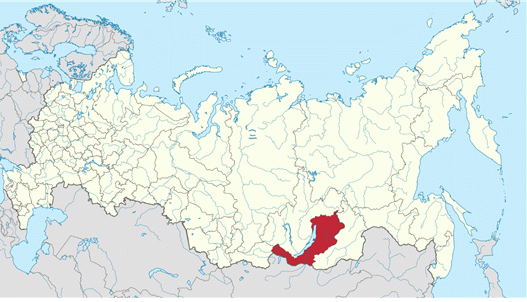
Figure 13. Buryatia on the map of Russia
The image of Manzan Gurme, the foremother of the Tengrist gods in the Buryat “Gesariad”, an epic of oral and written legends of the peoples of Central and East Asia about Geser Khan (“Son of Heaven”, “chosen king”) is very popular among the Buryats. The character of Manzan Gurme, according to the author’s assessment, has a striking resemblance to the heroine of Korean literary texts, the Goddess Mago, traditionally attributed by specialists to the Korean folklore tradition.
In this regard, it should be noted that in the divine Tengrist pantheon of the Geseriada, a special place is occupied by the image of Manzan Gurme, the ancestor of the heavenly gods in the Buryat epic and mythology. The cosmic nature of her maternal image is emphasized in a stable verbal formula: - “She who accepted many gods and raised one thousand gods” .
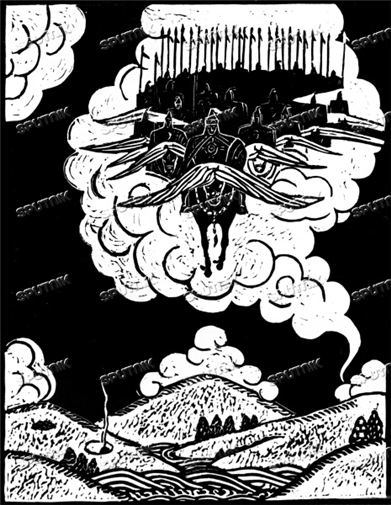
Figure 14. Reproduction of a linocut-illustration for the Buryat epic “Geser” by the artist Alexandra Nikitichna Sakharovskaya - “Geser and 33 heroes descend from the sky”
Manzan Gourme, like the Goddess Mago, is considered the mother of nine deities, representing the older generation of celestials . She, being a deity of matriarchal origin, is not formally included in the “nomenclature” of the Uranian pantheon, which is a product of the era of the paternal family, but, nevertheless, in the world of celestials she is assigned a primary role. All gods obey to Manzan Gurme and her orders are tantamount to command, law and have a higher power. Here we can see cultural similarities with the cult of the Goddess Mago. The head of the western fifty-five celestials himself, Khan Khurmasta (Khan Khirmas in the text) invariably listens to her advice and acts strictly on her orders.
Manzan Gurme is an active guardian goddess of Geser and his heroes, since they, the sons of the western celestials, descended to the earth under her auspices to protect the human race. Not Khan Khormust, the head of the Tengris is obliged to provide all possible assistance to his son Geser in his difficult struggle against the Mangadhai monsters. Not the Buddhist deities, called Burkhans, nominally present in the heavenly pantheon, namely Manzan Gurme - the ancestor of the celestials as a kind genius who patronizes and assists the hero in the epic tale while fulfilling his earthly mission, as destined by the will of the gods.
It should be emphasized that Manzan Gourme often does not act alone, but she has and fighting companions: her assistants are Zasa Mergen who is Geser’s heavenly brother, and his heavenly three sisters - sorceresses, and Alma Mergen who is Geser’s faithful wife.
How can one not draw cultural parallels with the Goddess Mago, whose main spiritual function is Magu (麻姑) in Chinese and Mago in Korean Mako. Mago (마고, 麻姑) in Japanese. She is a cosmogonic goddess in Korean creation myths. Hwang calls her the “Great Goddess”, describing her as follows: “Magoism, the archaic female-centered cultural matrix of East Asia derived from the worship of Mago as the creator, progenitor, and mistress.” The savior goddess Magu passed into Korean folk beliefs under the name of Mago halmi.
The power of Manzan Gourme is provided by another important circumstance: She is the owner of magical items, wonderful jewels and various secrets known only to her. For example, an apple that restores strength to Geser; a rod for cleaning wool, a silver mother-of-pearl talisman presented by Tumen Yargalan, Geser’s elder wife, and more. Of particular interest are the so-called “fifteen magical treasures” of Manzan Gourme, which play a certain plot-forming role in the epic. These treasures are associated with twoastral myths, in which the ideas of the Buryats about the miraculous abilities and magical power of Manzan Gurme are clearly reflected.
As it is narrated in the Gesariad, the hero needed to cleanse the underworld of Gumen Sesen Khan. The “fifteen magical treasures” that Manzan Gurme kept in her secret chests could help to cope with this task. Geser rises to heaven to Manzan Gourme and treats her with seventy types of food and excellent quality milk vodka (arza and khorzo) in seven shell-porcelain bowls made from the skulls of seven blacksmiths. She, having tasted the food and drunken from the drink, falls asleep.
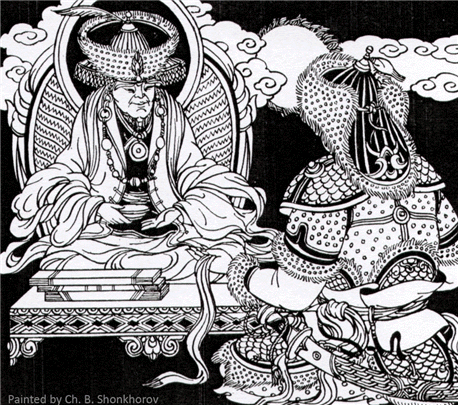
Figure 15. Manzan Gurme (Goddess Mago) instructs the bogatyr Geser.
Geser, meanwhile, opens the necessary chests, takes the “fifteen magical treasures” from there and sets off on his way back. Waking up, Manzan Gourme discovers the theft. Angry that the hero took her treasures without permission, she throws seven shell-porcelain bowls, which, flying up into the sky, turn into the constellation of the Seven Elders (‘Doloon Ubgad’) or Ursa Major. And, her formidable spell against Geser overtakes the hero halfway between heaven and earth and sends him to hell.
Meanwhile, Manzan Gourme, seeing that she is subjecting her great-grandson to too severe a punishment, sprinkles milk from her breast after Geser. Milk, scattering with splashes, becomes the Milky Way (Tengeriin Oyodol), and keeps Geser flying to the underworld.
The second aspect of worshiping the deity of the Goddess Mago is the goddess Umai.
Speaking about the paraphernalia of Manzan Gourme, it is necessary to say a few words about the “Old Mother Book”, to which the goddess often refers. Perhaps authoritative Korean researchers will be able to find parallels with the cult of the Goddess Mago. In the course of the epic plot, starting from the prologue, this sacred book gives the right to the foremother of the gods to take on a key role in determining the fate and deeds of the main epic characters.
With the help of the holy book, Manzan Gourme keeps the whole universe in his field of vision, unravels the knots of secrets unknown to gods and mortals, determines the course of further events and helps Geser overcome all obstacles on his heroic path. “Essentially, she is the head of everything that exists in the universe”.
In conclusion, I would like to briefly dwell on one more aspect related to Grandmother Manzan with the Goddess Mago Halmoni. Specifically, on the solar aspect of Manan Gourme’s image. According to the epic text, she is born from the rays of the sun, which determines her luminous good beginning. It is no coincidence that the celestial offspring of Manzan Gurme, the western fifty-five Tengris, has a clan epithet “Sagaan(white)”. This color in the Buryat sacred tradition shows a connection with the cult of the sun, since such is the semantics of “White”.
The solar background is also contained by the numerical symbolism of the eighth heaven - the seat of Manzan Gourme. This numerological epithet goes back to the early myths of the Buryats, in which the sun as a mother was represented as a zoomorphic creature with eight legs, and subsequently depicted in the form of eight fences or eight rays - “legs” (‘sacred shamanic ongons’) . In shamanic invocations, the symbolism of the number eight is also traced to the characteristic of the female, maternal principle of the sun. In the Selenginsky district of Buryatia, there is still worship of the Female Deity.
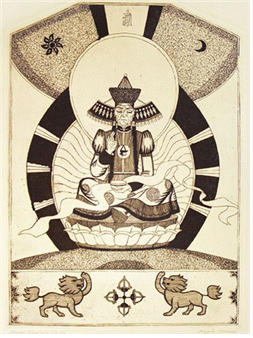
Figure 16. Grandmother Manzan Gurme (Goddess Mago) on a lotus throne.
It should be noted that the attributes of Manzan Gourme are not devoid of solar signs, expressed in the chromatic epithets altan - golden and shara - yellow. These are, for example, “altan shara ayaga” - the golden cup of the foremother of gods and “khulkhan shara Norbo” - red yellow cane and the golden woolen rod mentioned above, carried in the hands of Geser, the solar life.
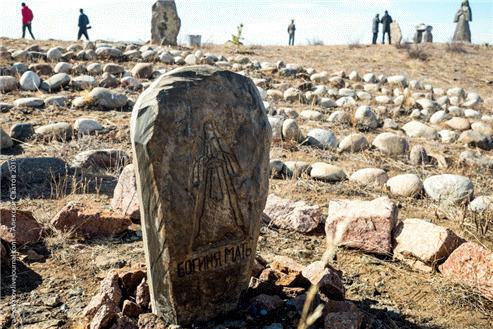
Figure 17. Stone with the inscription Mother Goddess. Neo-pagan beliefs in Buryatia.
This affirms the principle in the context of his confrontation with the enemy who comes from the kingdom of darkness and death. And, finally, the “Ancient Mother’s Book”, which is called “Golden Book” in a number of special cases, also carries a solar semantic coloring.
Altai: Hypothesis about the Altai peoples.
The mythology of the Altai peoples contains a huge layer of vague memories of the cult of the Goddess Mago. The mythology of the Altaians is a set of mythological views, beliefs and cults of the Altaians. In the mythology of the Altaians, there is an idea of both the three worlds of the Universe (heavenly, earthly and underground) and its many spheres, layers or tiers, in which numerous characters of Altai mythology dwell. The heavenly sphere is inhabited by light and benevolent deities and spirits. Yuch-Kurbustan, Ulgen, Burkhan, Kudai were considered the supreme celestials, demiurges, creators of the world of various religious and mythological traditions.
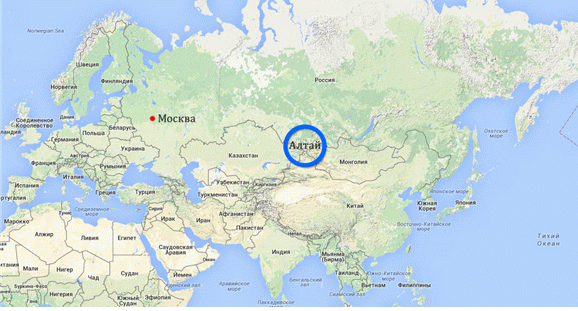
Figure 18. Altai on the map.
The earthly sphere is inhabited by man and numerous earthly deities and master spirits of the surrounding nature: spirits of fire, wind, water, mountains, forests, springs, and household spirits. Spirits hostile to humans live in the underworld. The ruler of the underworld is Erlik, brother of Kudai (‘god’ in Persian tradition).
A special place is occupied by Umai (Ymai), the most ancient female deity of the Turkic and Mongolian peoples, occupying the second place after Tengri. Among modern peoples, it is known among the Altaians, Bashkirs, Buryats, Kazakhs, Kirghiz, Mongols, Tatars, Khakasses and others. The most ancient references to the deity are known in the ancient Turkic script.
Umai is a highly revered earthly female deity, a benevolent (‘bayana’) spirit, the patroness of children and women in childbirth. Before childbirth, guarding the woman in labor and the baby, Umai takes place at the entrance on the left side of the yurt, which is considered clean. The personification of the feminine is reflected in the very name Umai, which means the womb of the mother, the uterus and even the cut off umbilical cord.
In honor of Umai, in the front corner of the yurt, along with other images, they hung a doll made of blue cloth, which was fed gruel if the child fell ill. Newborns and children of lullaby age are under her special protection and she protects them until they became six years old, until they get on their feet. The life and health of the children depend on her, as she protects them from evil forces and spirits.
An image has been preserved, as the Altaians believe. The Altaians worship it as a manifestation of Umai or Ulug Khurtuyakh tas (literally ‘Big stone old woman’ in Khakassian language). This is a stone statue near the Ankhakov aal in Khakassia, and it is a monument of the Okunev culture of the late III to early II millennium BCE.Height - 3.02 meters, weight - 2.6 tons.
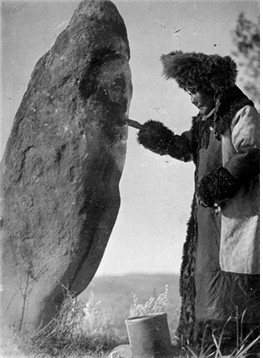
Figure 19. A Khakass woman performs a ritual “feeding” Ulug Khurtuyakh tas.
Having received the funds from the Khakassian Republican Museum of Local Lore in 1954, Albert Nikolaevich Lipsky, an archaeologist working with the museum organized the work to remove the statue. The reason for moving the statue to the museum was an attempt to protect the work of art from acts of vandalism. The statue of Khurtuyakh tas, known to science since 1722, enjoys special reverence among local residents as an object of women cult and and she is the patroness of motherhood. Here is how A. N. Lipsky describes the rite of worship of Khurtuyakh tas after she was transferred to the museum:
“... In the courtyard of the Abakan Museum, in the collection of ancient sculptures, there is a sculpture of Khurtuyakh tas - a stone old woman, taken out by me in 1954 from the Ankhakov ulus in the Middle Abakan. This is a sandstone obelisk, carefully crafted, containing a sculpture of the face of a head not made of stone, and a well-shaped belly of a pregnant woman, with a face carved on it ... so, a young Khakass woman stood in front of this statue, holding a bowl with araka, milk vodka at the mouth of a stone old women. The mouth of the statue is richly smeared with sour cream. On the ground there were birch bark tuyasks with food, with araka and abyrtkha - a bread drink. ... A young woman, putting a cup of vodka to the mouth of the statue, whispered something, bowing to Khurtuyakh tas ... When the young woman finished praying, I asked her and her companions to go to the museum. Here, after my persistent inquiries, the old woman finally said that the young woman, her daughter-in-law, has been married for the tenth year, but she has no children, and we heard that Khurtuyakh tas was taken to Abakan, and we came here to ask her to give our daughter-in-law children ...”.
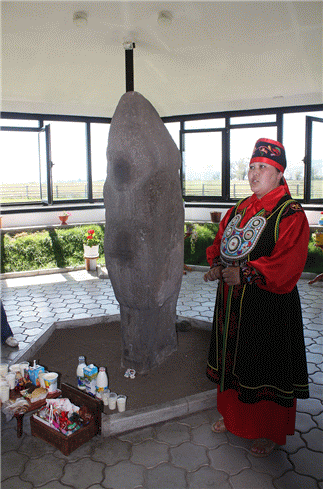
Figure 20. Statue in the Ankhakov Museum
Currently, the statue is again placed near the village of Ankhakov in a covered pavilion. It is located on the 113th kilometer point of the Abakan-Ak-Dovurak highway. There is also an open-air museum.
The stone statue Ulug Khurtuyakh tas was first described by Daniel Gottlieb Messerschmidt in 1722:
“... Kurtuyak was carved out of gray sandstone and dug obliquely into the ground. From behind you can see thick braids hanging, woven from hair. The pagan Tatars render her great honor, circle around her three times, and then they perform a ceremony, making her an offering with food. From their ancestors they heard that this Kurtuyak statue was once a famous matron and the almighty God himself turned her into stone ...”.
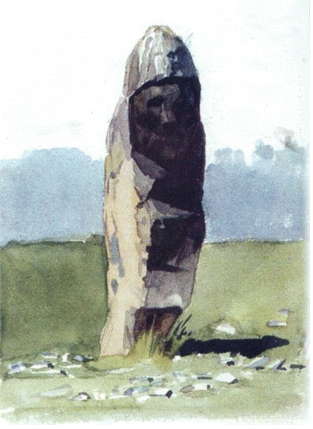
Figure 21. Sketch by V.I. Surikov “Stone woman”.
N. F. Katanov mentions the location of Khurtuyakh tas:
“... from the village of Askiz to the village of Ust-Es, I and my wife ... set off on July 9, 1899 ... on the right side of the road ... between the uluses of Apakov and Karablekov, there stands a tall stone old woman facing the northeast, and she is called by the natives “Khurtuyakh tas”. It was noticed by P S. Pallas as early as September 5, 1772 ...”
Thus, the cult of the Goddess Mago has many echoes in the Slavic, Baltic, Ural and Altai and Yakut and Buryat cultures. Locally, under different names, the cult of the mother goddess is better preserved among the peoples of Siberia, Yakutia and Altai.
Ancient images of a woman found in Siberia, made of stone, horn or animal bones show a dressed woman, often in warm fur clothes. This fact also speaks in favor of the fact that Mago was from the Vilyui region of Yakutia.
Reverence about her is also associated with a wide cult of fertility and belief in motherhood as the beginning of a clan and tribe.
The most complete cult is preserved among the Altai peoples. Even the name of the goddess Umai is still revered and there are villages where people turn to her for strength and children.
Shamans of Siberia and Altai, honoring Umai, pronounce words very similar to those words of worship dedicated to the Mago Goddess.
Bibliography
Abai Geser [The King Gesar]. Ulan-Ude, 1960. 314 p. [In Russ.] p.16.
Abai Geser Bogdo khan [The King Gesar Bogdo Khan]. Ulan-Ude, 1995. 521 p. [in Russ.]. p. 25.
Ulanov A. I. K harakteristike geroicheskogo eposa burjat [On Characteristics of Buryats’ the Heroic Epos]. Ulan-Ude, 1957. 172 p. [In Russ.]. p. 11.
Hwang, Hye Sook. 2004. An Investigation of Gynocentric Unity in Mago, the East Asian Great Goddess, and Elsewhere Presented at the Conference of Pacific and Southwest Women’s Studies, Scripps College, Claremont CA.
Kuzmina E. N. Zhenskie obrazy v geroicheskom epose burjatskogo naroda [Female Images in the Buryats’ Heroic Epic]. Novosibirsk, 1980. 160 p. [In Russ.]. p. 57.
Manzhigeev I. A. Burjatskie shamanisticheskie i doshamanisticheskie terminy [Buryatian Shamanic and Pre-Shamanistic Terms. The experience of Atheistic Interpretation]. Moscow, 1978. 127 p. [In Russ.]. page 60/
Tushemilov P. M. Abai Geser [The King Gesar]. Ulan-Ude, 2000. [In Russ.] p. 256.
 Goddess Mago, Siberian peoples, cult of Mother Goddess, cultural parallels, true faith of ancestors.
Goddess Mago, Siberian peoples, cult of Mother Goddess, cultural parallels, true faith of ancestors. 







 댓글 0개
| 엮인글 0개
댓글 0개
| 엮인글 0개


 인쇄
인쇄 스크랩
스크랩



